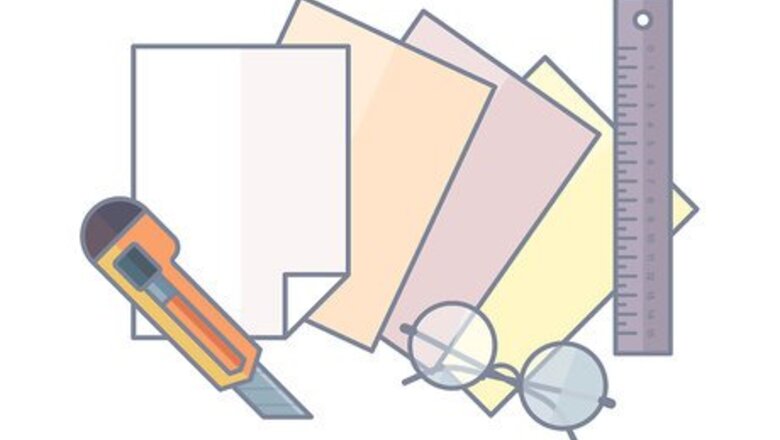
views
Cutting the Paper
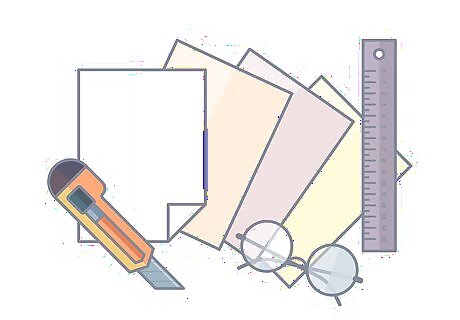
Choose your paper, then cut it if needed. Regular paper will work for most books, but if you want something fancier, consider handmade paper, sketchbook paper, or even watercolor paper. Your paper needs to be the height you want your pages to be, and twice the width. If it's too long, cut it. You will be folding your paper in half. Decide how many pages you want, then use half that number.
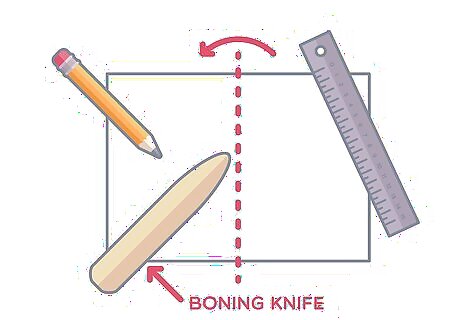
Fold your paper in half widthwise. Run your fingernail or a boning knife along the folded edge to sharpen the crease. Now your paper should be the exact height and width you want the pages to be. Fold the pages one at a time.
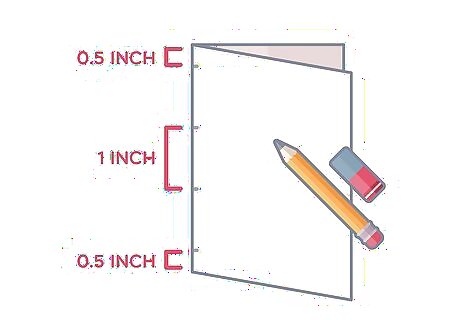
Make an even number of marks along the edge of your first sheet for the stitching. Pick one sheet to use as your guide. Using a pencil, make small marks along the folded edge where you want the stitches to be. The first and last marks should be ½ inch (1.27 centimeters) from the top and bottom. The rest of the marks should be 1 to 2 inches (2.54 to 5.08 centimeters) apart. Make sure that you make an even number of marks, otherwise the stitching won't work out.
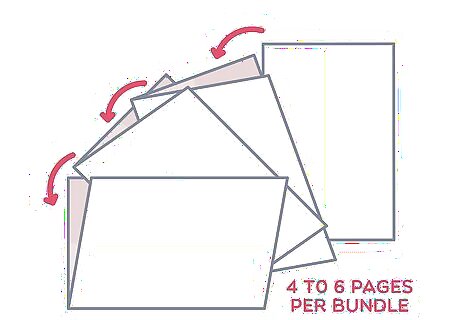
Tuck the pages inside one another to create bundles. Plan on using 4 to 6 pages per bundle. The more pages you cut, the bigger your bundles can be. Avoid using more than 6, however, or the book will warp.

Stack the papers, then extend the marks down the other folded edges. Gather all of your bundles into a stack, with the marked sheet on top. Make sure that all of the folded edges are lined up, then use a pencil to draw lines across the folded edges. Use the marks on the first page as a guide.
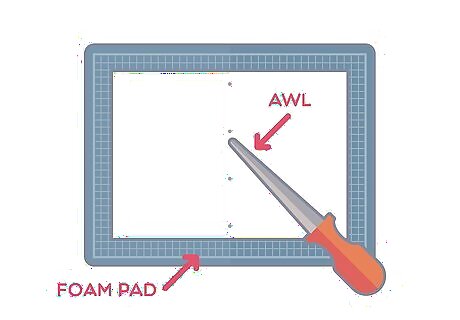
Use an awl to punch the paper. Thanks to the lines you drew in the last step, each of the folded edges should now have marks on them. Unfold the bundles and flatten them on a foam pad. Use an awl to punch a hole over each mark.
Sewing the Pages
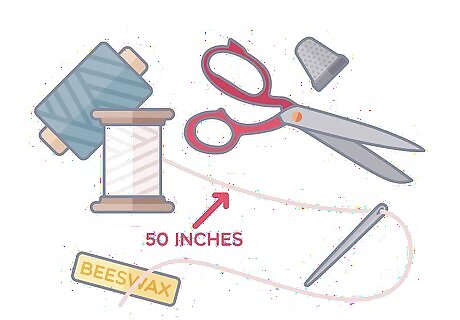
Thread a book binding needle with a long piece of waxed thread. If you can't find any waxed thread, you can use regular thread, then run it across a piece of beeswax. A 50-inch (127-centimeter) piece of thread should be long enough for most books. If you can't find a book binding needle, a curved needle will also work.
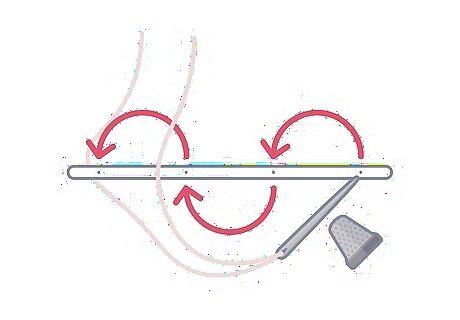
Begin to sew the first bundle, starting from the outside. Pull the thread through the bottom hole on the outside of the first bundle. When you have about 6 inches (15.24 centimeters) of thread left, move onto the next hole. Keep sewing through the holes until you come out of the top hole on the outside of the bundle again.

Add the next bundle. Slide the needle through the top hole on the next bundle. Push the bundle down the thread until its spine bumps up against the first bundle's spine. Continue sew up and down through the holes until you reach the bottom hole.
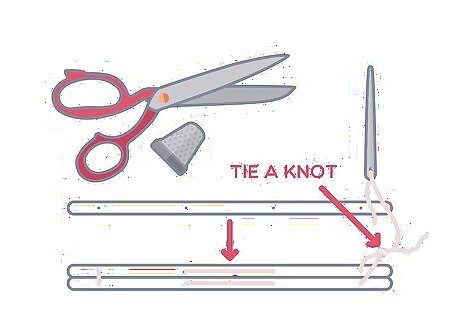
Tie the thread together, then add the next bundle. When you come out of the bottom hole on the next bundle, find that 6-inch (15.24-centimeter) tail from before. Tie the two threads together in a tight knot, then add the next bundle, just like you did the second one.
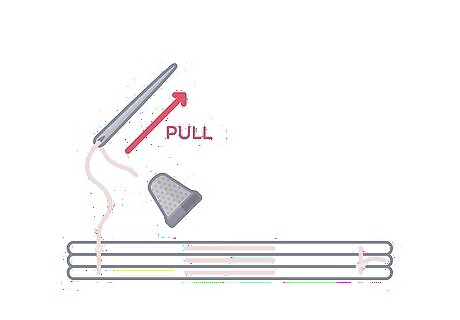
Continue sewing, then loop the thread around the horizontal stitches at the top. Use the needle to weave the thread in and out of the holes. When you come out of the top hole, stop, and take a look at the spine. You'll notice horizontal stitches running across the spine. Pull the needle down through the top horizontal stitch so that the thread loops around it.
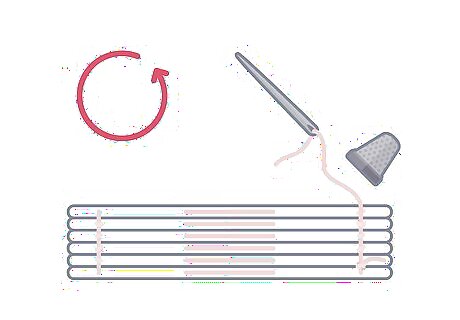
Continue adding bundles, sewing them, and looping the thread around horizontal stitches. Slide the next bundle onto the needle. Sew your way towards the bottom hole. Slide the needle up through the bottom horizontal stitch, then add the next bundle. Keep sewing up and down, wrapping the thread around the top/bottom stitching, and adding bundles until you reach the last one.
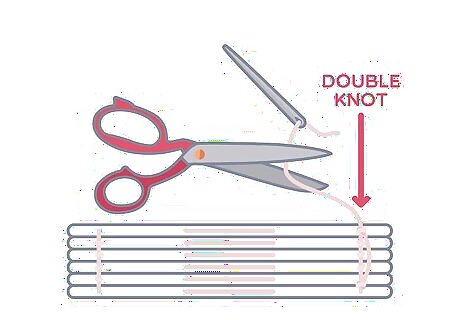
Tie the thread off. Wrap the thread around the closest horizontal stitch to make a loop, then slide the needle through the loop to make a knot. Do this one more time to tighten the knot. If you finished on the bottom row, tie the thread to the 6-inch (15.24-centimeter) thread from before in a tight, double knot. Cut off the remaining thread.
Assembling the Spine
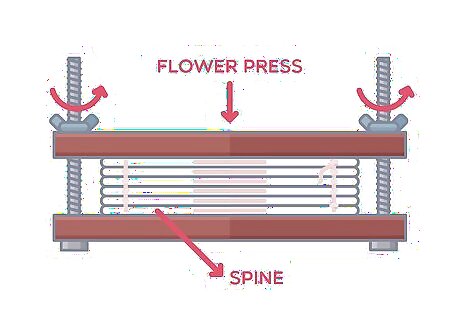
Clamp the pages between two vices or a flower press. If you using two vices, consider places the pages between two boards or catalogues. If you are using a flower press, make sure that the spine is sticking out past the edge of the press by about ¼ to ½ inch (0.64 to 1.27 centimeters).

Paint glue across the back of the spine. Use a brush to coat the entire spine with glue, from edge-to-edge, top-to-bottom. Book binding glue will work the best, but if you can't find any, ordinary pva glue (ie: white glue or carpenter's glue) will also work.
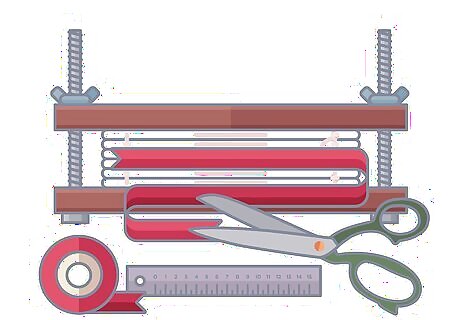
Add a ribbon bookmark, if desired. Cut a piece of ribbon that's twice the length of the spine. Place it down the center of the spine. Make sure that the bottom end of the ribbon is ½ to 1 inch (1.27 to 2.54 centimeters) from the bottom end of the spine. Coat the spine again with more glue to seal the ribbon in.
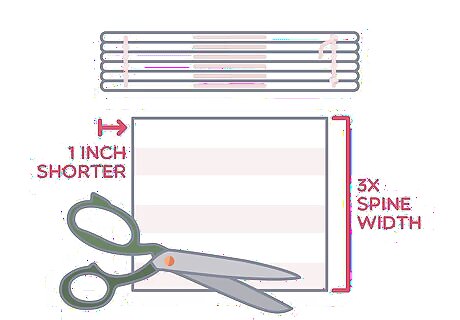
Cut a strip of fabric for the spine. The fabric needs to be 1 inch (2.54 centimeters) shorter than the spine and three times the width. Plain, cotton fabric will work the best for this.

Glue the fabric onto the spine, then fold the side edges down. Coat the fabric with your glue, then coat the spine with more glue. Place the fabric over the spine, with ½ inch (1.27 centimeters) of space on the top and bottom. Fold the side edges of the fabric down onto the first and last page of the book. Clamp the spine together until the glue dries.
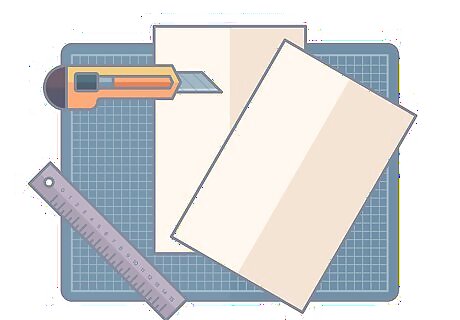
Cut two sheets of paper the same size as your pages. Choose a durable paper, such as cardstock. You will be using this paper to secure the pages to the actual book.
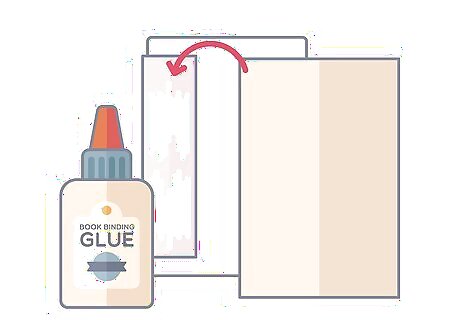
Glue the sheets to the side edges of fabric. Unclamp the book, then turn it so that the front is facing you. Coat the fabric on the front with glue, then press the first sheet of paper into it. Repeat this step for the back. Clamp the spine again until it dries.
Creating the Cover

Cut the cardboard for the spine and the front and back covers. The spine needs to be the same width as the spine on the sewn bundles, and ½-inch (1.27 centimeters) taller. The front and back covers need to be the same width as the sewn bundles, and ½ inch (1.27 centimeters) taller.

Glue the cardboard to the back of the leather. Coat the back of the leather with glue, then paint the cardboard with more glue. Press the cardboard into the glue. Make sure that the top and bottom edges of each piece are aligned, and that you have about a ¼-inch (0.64 -centimeter) gap between the spine and cover pieces. Choose thin leather, otherwise it won't fold easily.
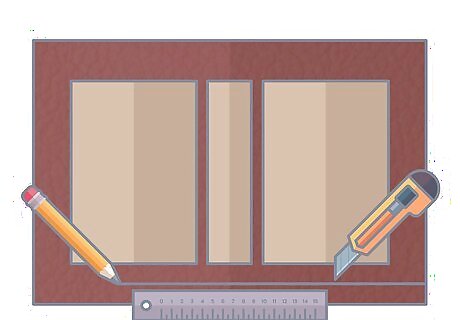
Cut the leather out, leaving a boarder around the cardboard. Use a ruler and a pen to trace a 1-inch (2.54-centimeter) boarder all around the book—this includes the covers and the spine. Cut the leather out using a metal ruler and a craft blade.
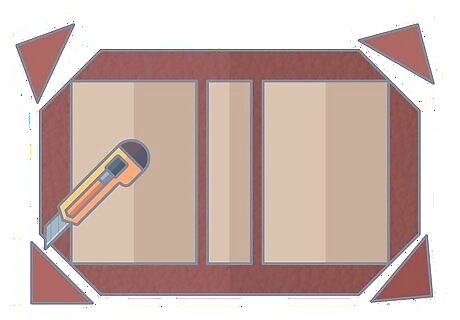
Clip the corners. Use a metal ruler and a craft blade to slice off the corners of the leather, as close to the cardboard corners as you can. This will reduce bulk when you fold and glue the leather down.

Glue the sewn pages into the book. Coat the front and back cardstock of your bound pages with glue. Next, apply more glue to the front and back covers of your leather—right onto the cardboard. Press the cardstock pages right into the glue. Do not apply any glue to the spine.

Weigh the covers down separately. Hold the bound pages of your book straight up. Place a heavy book on top of the left cover, and another book on top of the right cover. Scoot them together so that they hold up the bound pages in the middle. Let the glue dry. Wipe away any glue that leaks out from under the paper first.
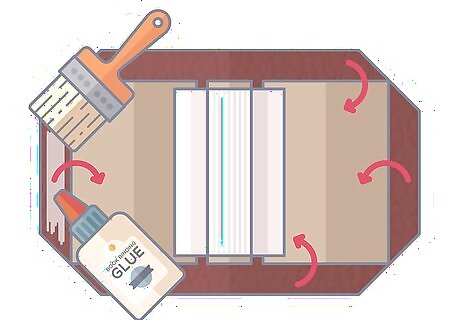
Glue the edges of the leather onto the cardstock. Remove the book weights first. Paint more glue around the edges of the cardstock and the leather. Fold the leather onto the cardstock. The leather may not stick right away; you can temporarily clamp them with clothespins or binder clips.
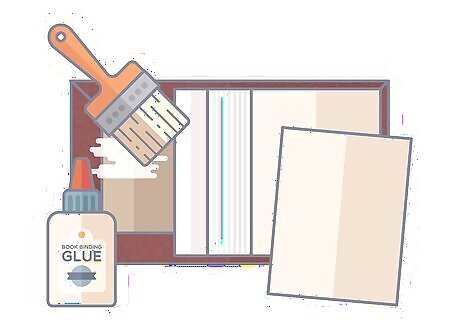
Add the end pages. Cut two sheets of pretty paper that are the same size as your pages. Coat the back of each one with glue, then paste them over the inside of each other. This will cover the folded over leather as well as the fabric strip. You may have to move the clips out of the way for this step.

Clamp the book and let it dry. Close the book and wipe off any excess glue with a damp cloth. Clamp all four corners of the book with a vice, or use a flower press. You can also stack several heavy books on top. Let the book dry, then remove the clamps.




















Comments
0 comment